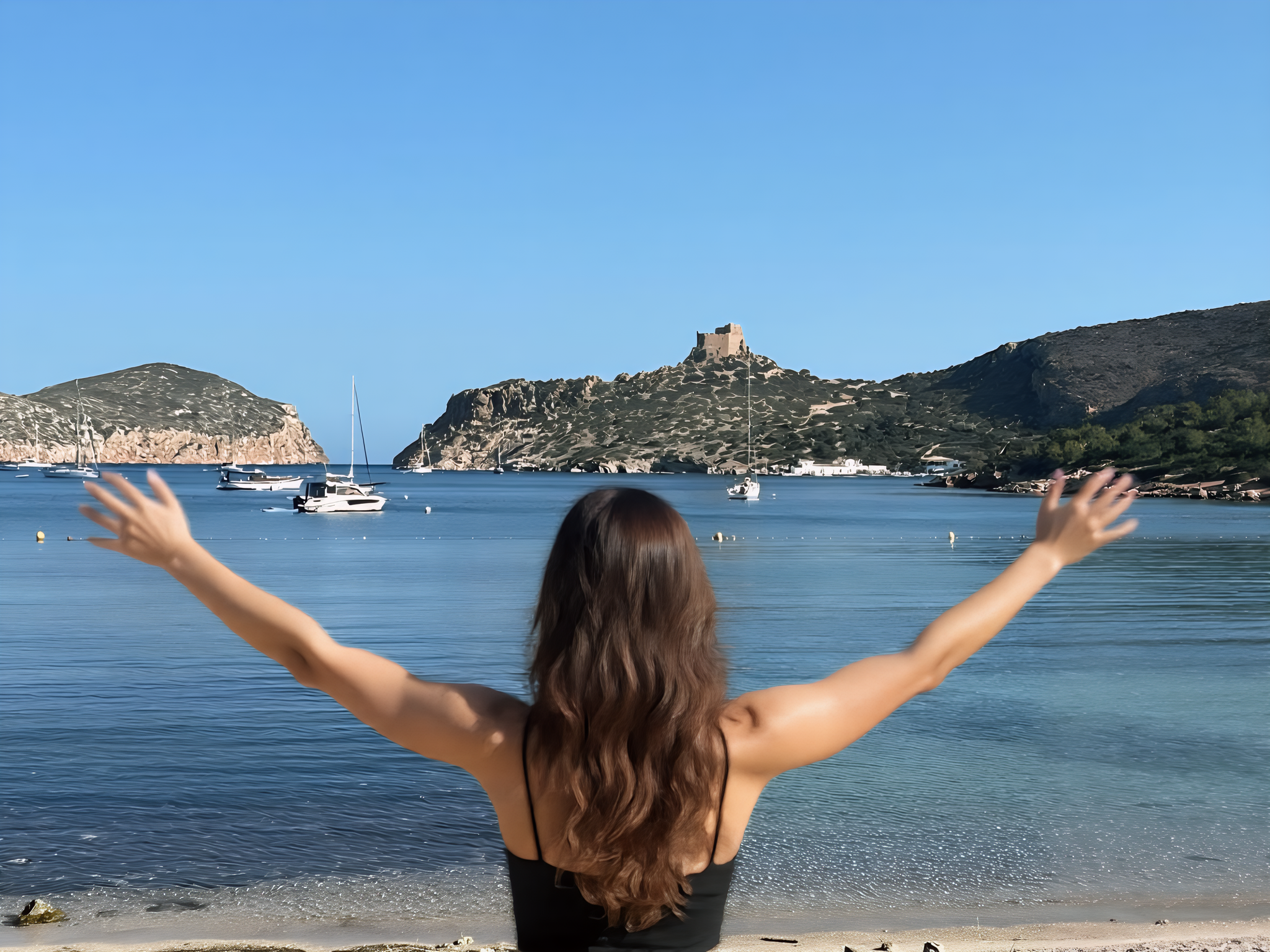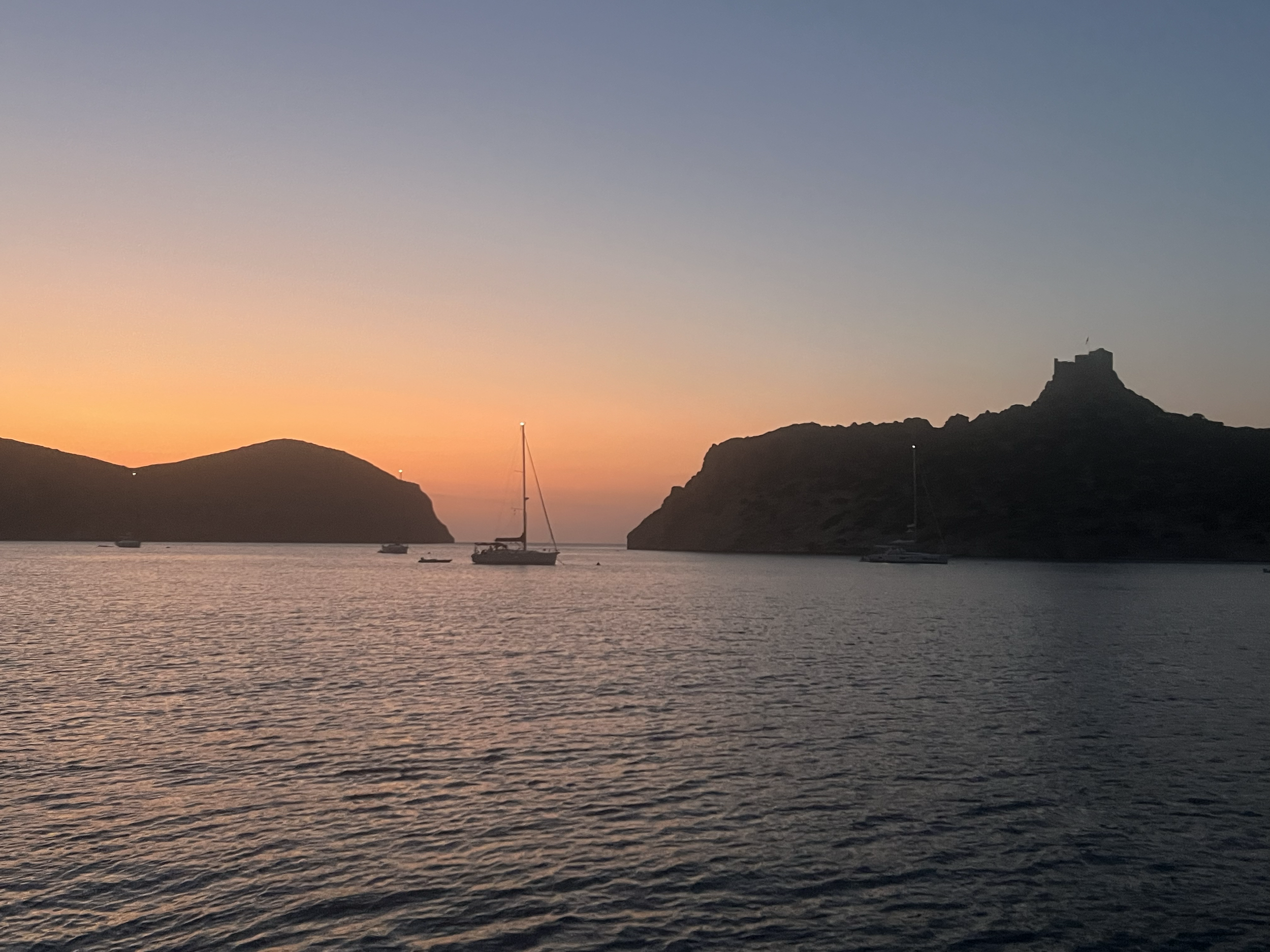Sailing to Cabrera: An Adventure of Sea, Sun & Sustainability
Just a short sail south of Mallorca lies a place that feels like time hit pause. No hotels. No shops. No Wi-Fi. Just cliffs, crystal-clear water, wild landscapes, and a long history carved into stone and sea. Cabrera, the crown jewel of Spain’s marine national parks, is one of the most unspoiled and eco-conscious destinations in the Mediterranean — and visiting it by boat is both a privilege and a responsibility - one that we were lucky enough to experience!
My partner and I sailed to Cabrera National Park during our trip around Mallorca, and honestly, it turned out to be one of the most beautiful and meaningful places we’ve ever visited. Cabrera isn't just stunning — it’s a leading example of sustainable island tourism, and experiencing it by boat made me appreciate just how fragile and special our seas really are.
Whether you're planning your own sailing trip or just curious about off-the-grid island escapes, here's everything you need to know about Cabrera's sustainability efforts, fascinating history, and what to do when you get there.
Why Cabrera Is a Model for Sustainable Tourism
Declared a National Park in 1991, Cabrera is part of a protected archipelago made up of 19 small islands and islets. The land and surrounding sea are under strict environmental protection, which has helped restore and preserve this rare ecosystem. The difference from Mallorca to here is instantly noticeable; everything here feels wilder, quieter, and more alive.
The marine reserve around the island is thriving — we saw schools of fish darting beneath the boat, seabirds circling the cliffs, and even the flash of a jellyfish or two. It’s all thanks to strict environmental rules that actually work, which include:
1. Limited Access
Only 50 moorings are available per night — and you must book in advance.
No anchoring is allowed in the park to protect the seagrass beds.
If not on a boat, there is a hostel you can stay in which allows up to 12 people to stay at a time.
Total of 300 visitors per day (inclusive of the few tourist boats which go there).
This cap on visitors keeps both the marine environment and the island’s trails from becoming overused (and honestly makes the experience even that much more magical)
2. No Development
There are no private businesses on the island
You’ll find a visitor center, a small museum, one bar, a hostel and park rangers — and that’s about it.
The few roads available are dirt roads and were built prior to the island becoming a national park.
This helps preserve the island’s raw beauty and prevents pollution or strain on natural resources.
3. Strict Waste Policy
You must take all trash and waste back with you — there are no bins.
Marine toilets and greywater discharge are forbidden — which keeps the water genuinely clean.
Cabrera proves that with the right boundaries, tourism and nature can coexist beautifully.
A Surprising History for Such a Quiet Place
For such a peaceful little island, Cabrera has seen some seriously dramatic history. Cabrera may be quiet now, but it hasn’t always been - This tiny island has a long and surprisingly intense history which made it even more special to visit. Here is the brief rundown of the history of this beautiful island:
Pirate Attacks & Coastal Defense
During the Middle Ages, Cabrera was a strategic lookout point against Barbary pirates who raided the Balearics. The castle above the harbor, built in the 14th century, was part of Mallorca’s defense system — and still stands today, with epic views.
Napoleonic Tragedy
In one of the island’s darkest chapters, Cabrera was used to imprison more than 9,000 French soldiers during the Napoleonic Wars (1809–1814). With little food or shelter, most of the men died. A memorial stone near the port quietly marks the spot where they once camped and suffered.
20th Century Military Use
Before being declared as a National park in the 1990’s, Cabrera served as a military training area, and some of the bunkers and storage buildings still remain hidden in the hills.
Only in recent decades has the island been fully demilitarized and returned to nature — making its transformation into a national park all the more powerful.
What We Did on Cabrera (and What You Should Do Too)
Even with its minimal infrastructure, there’s plenty to explore on land and sea. Here’s what to look forward to for your trip to Cabrera:
Hike to the Castle
We hiked up to the Castell de Cabrera just before sunset. It’s a short climb, and from the top, you get the most spectacular views of the island and the sea — not to mention the golden light hitting the cliffs. Highly recommend doing it barefoot after a swim.
Spot Native Wildlife
We saw so many Balearic lizards (they’re tiny and blue-ish!), along with seabirds I couldn’t name but admired all the same. Cabrera is also home to Eleonora’s falcons and Audouin’s gulls, and if you’re into birdwatching, it’s paradise.
Visit the Museum
The Museum gave us great insight to the history of the island - it’s where you’ll find exhibits on the island’s ecology, geology, and history. With aircon included it is definitely worth a visit.
Walk around the military & prison ruins
Still standing are the remains of the Napoleonic-era prison camp where where thousands of French prisoners were held in harsh conditions during the early 1800s, marked today by a simple memorial near the harbour. Additionally, the island features several 20th-century military ruins, including old bunkers, watchtowers, and storage buildings hidden among the hills, remnants from when Cabrera was used for military training and coastal defense.
Hike to one of the many lighthouses
Cabrera is home to four lighthouses, each with their own amazing views. Although some are inaccessible, the ones that are are amazing and definitely worth your time!
Take a trip to the Blue Cave by dinghy
By far one of the most magical moments of our trip. The Blue Cave (Cova Blava) is only accessible by dinghy, and when we slipped inside in the late afternoon, the sunlight turned the water electric blue. It’s one of those “is this real?” kind of places. Bring your snorkel and take a plunge to see the deep blue in full effect - often there are quite a few fish swimming by too!
Visiting Cabrera: What You Need to Know
Visiting Cabrera can be tricky, even more so if you do not have a boat. There are 12 spots for overnight stays on land and there are a few tourist boats that do day trips to the island, but as they are few, they do book out quick! For those lucky enough to have a boat, here is what you need to know:
Apply for a mooring permit in advance via the official Balearic national parks site. They are available up to 20 days in advance, but be quick, they get booked out fast!
Avoid anchoring at all costs — seagrass takes decades to regrow and you will be fined if caught.
Leave no trace — pack out every scrap of trash, food, and recyclables.
Respect wildlife — don’t feed or disturb animals, and keep a respectful distance from nesting birds or turtles.
Final Thoughts: Why Cabrera Is a Place Worth Visitng (& Protecting)
Visiting Cabrera is like hitting pause on modern life — a reminder of what the Mediterranean once looked like, before over-tourism and resorts. It’s not just a stop on your sailing itinerary — it’s a chance to experience nature at its most raw and real.
By keeping visitor numbers low, development nonexistent, and nature in the spotlight, Cabrera has become a blueprint for sustainable island travel. And as sailors, we get to be part of that — if we treat it with the care it deserves.
If you're sailing around Mallorca and want to experience something real, something raw, be sure to put Cabrera on your list!




